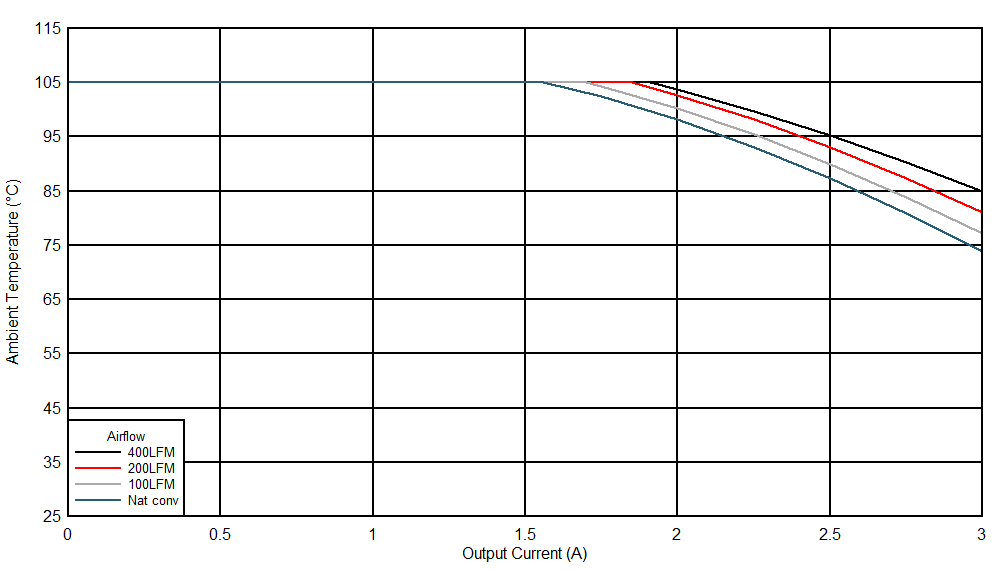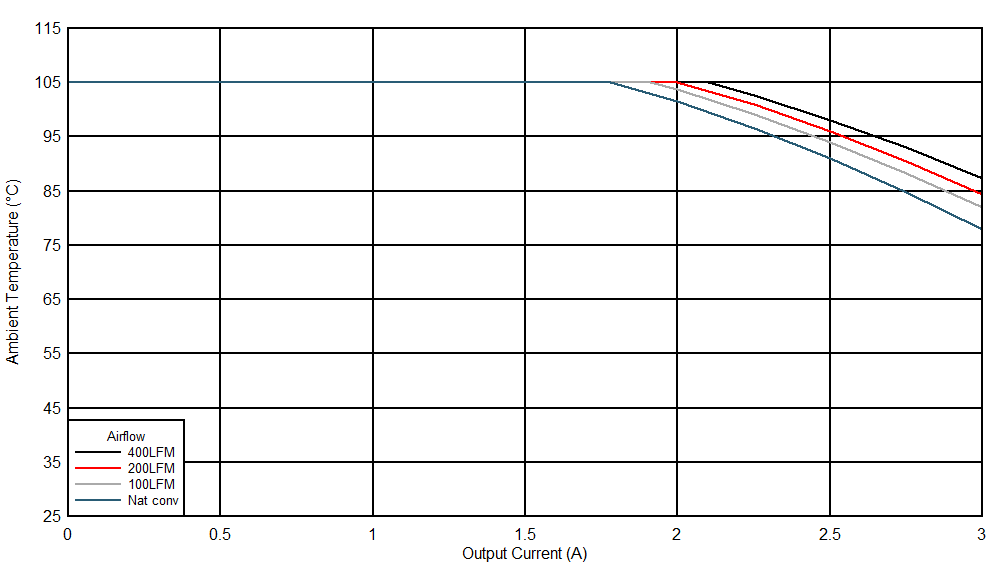SLVSFT6B May 2021 – January 2022 TLVM13630
PRODUCTION DATA
- 1 Features
- 2 Applications
- 3 Description
- 4 Revision History
- 5 Pin Configuration and Functions
-
6 Specifications
- 6.1 Absolute Maximum Ratings
- 6.2 ESD Ratings
- 6.3 Recommended Operating Conditions
- 6.4 Thermal Information
- 6.5 Electrical Characteristics
- 6.6 System Characteristics
- 6.7 Typical Characteristics
- 6.8 Typical Characteristics: VIN = 12 V
- 6.9 Typical Characteristics: VIN = 24 V
- 6.10 Typical Characteristics: VIN = 36 V
-
7 Detailed Description
- 7.1 Overview
- 7.2 Functional Block Diagram
- 7.3
Feature Description
- 7.3.1 Input Voltage Range
- 7.3.2 Adjustable Output Voltage (FB)
- 7.3.3 Input Capacitors
- 7.3.4 Output Capacitors
- 7.3.5 Switching Frequency (RT)
- 7.3.6 Output ON/OFF Enable (EN) and VIN UVLO
- 7.3.7 Power Good Monitor (PG)
- 7.3.8 Internal LDO, VCC Output, and VLDOIN Input
- 7.3.9 Overcurrent Protection (OCP)
- 7.3.10 Thermal Shutdown
- 7.4 Device Functional Modes
-
8 Applications and Implementation
- 8.1 Application Information
- 8.2
Typical Applications
- 8.2.1 Design 1: 3-A Synchronous Buck Regulator for Industrial Applications
- 8.2.2 Design 2: Inverting Buck-Boost Regulator with a –5-V Output
- 9 Power Supply Recommendations
- 10Layout
- 11Device and Documentation Support
- 12Mechanical, Packaging, and Orderable Information
Package Options
Mechanical Data (Package|Pins)
- RDH|30
Thermal pad, mechanical data (Package|Pins)
Orderable Information
6.9 Typical Characteristics: VIN = 24 V
Refer to Section 8.2 for circuit designs.
| VLDOIN = VOUT |
| COUT = 2 × 47-µF ceramic, 25-V, 1206 case size |

| Device soldered to a 64-mm × 83-mm, 4-layer PCB |
VOUT = 5.0 V, FSW = 1 MHz
| VLDOIN = VOUT |

| Device soldered to a 64-mm × 83-mm, 4-layer PCB |
VOUT = 3.3 V, FSW = 800 kHz